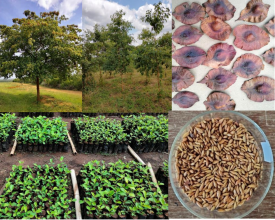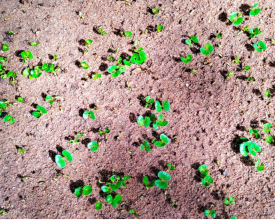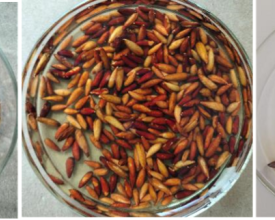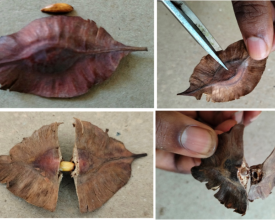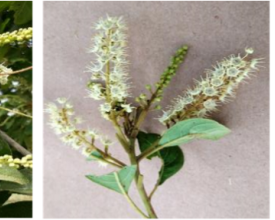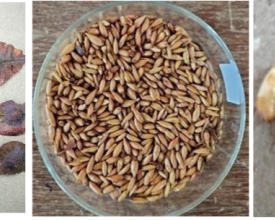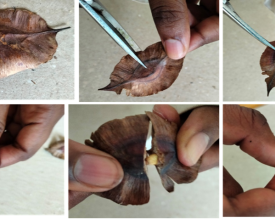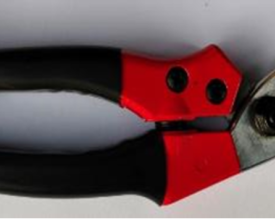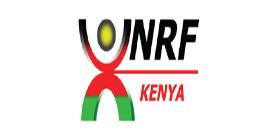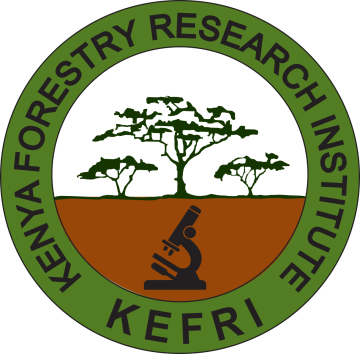
Propagation of Indigenous Tree Species in Drylands; A case study of the Red Pod Terminalia in Kenya
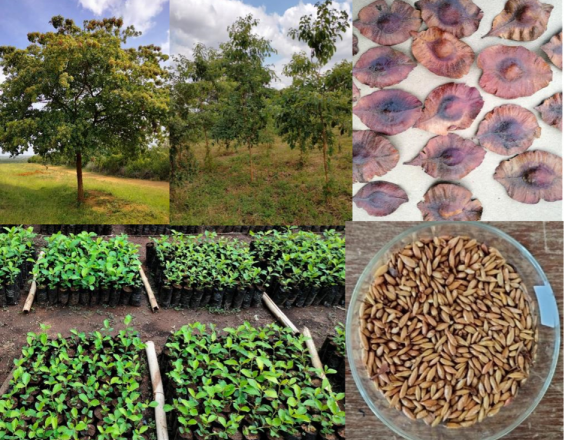
Propagation and regeneration of native plant species, such as the Red Pod Terminalia (Terminalia brownii Fresen), pose significant challenges, especially in developing countries where research is limited. Native to the semi-arid regions of East, Central, and West Africa, this drought-tolerant tree offers numerous benefits, including medicinal properties, timber, fuel, and materials for handicrafts. Despite its potential, the population of T. brownii in Kenyan drylands is rapidly declining due to deforestation, ecosystem fragmentation, and overexploitation. The lack of proper seed handling and germination guidelines has hindered the domestication and large-scale planting of this valuable species, affecting livelihoods and the sustainable development of drylands.
Context
Challenges addressed
Despite all these benefits derived from the species, T. brownii population within Kenyan drylands are decreasing at a high rate due to deforestation, ecosystem fragmentation and overexploitation. This is due to lack of proper technical guidelines on the collection, handling and germination of this important multipurpose tree species, leading to lack of enough seedlings to meet increasing tree planting programmes in drylands. This solution is meant to bridge this gap by providing stepwise instructions on T. brownii fruit collection, handling, and seed extraction, germination and early seedling growth management, major challenges which were overcome are summarized as;
- How to harvest mature and viable Red Pod Terminalia
- Procuring and accessing specialized hand secateurs for extracting Terminalia seeds,
- Initial training for the extraction crew to minimize injury to personnel and seeds.
Location
Process
Summary of the process
The three building blocks are intricately connected, each reinforcing the other to achieve successful outcomes. The identification of resilient tree species like T. brownii forms the foundation, providing a reliable, climate-adapted resource for dryland communities. This tree's ecological suitability and market demand ensure its viability and encourage widespread adoption. Next, the improvement of alternative livelihoods is directly supported by the propagation of T. brownii. By integrating this species into agroforestry systems, communities not only benefit from its products—such as firewood, honey, and medicinal compounds—but also gain additional income through carbon trading and other market opportunities. The involvement of communities in tree planting initiatives further strengthens this link, ensuring that the benefits are both immediate and sustainable. Finally, the advancement of propagation techniques ensures a consistent and high-quality supply of T. brownii seedlings.
Building Blocks
Indigenous Trees for Climate Resilience in Drylands
This building block focuses on identifying and utilizing climate-resilient tree species, particularly the Red Pod Terminalia (T. brownii), in dryland restoration efforts. Extensive research has shown T. brownii’s exceptional survival rate and growth potential in arid regions. A screening trial in Baringo, Kenya, demonstrated a 97% survival rate for T. brownii within two years, outperforming other indigenous and Australian Acacia species. These promising results highlight T. brownii's suitability for dryland restoration, making it a prime candidate for combating deforestation and climate change in Kenya's drylands. Our goal is to scale up the use of T. brownii and other drought-resistant species to enhance reforestation efforts. The research also explored effective seedling production and improved germination techniques to ensure the successful establishment of these trees in harsh environments.
Enabling factors
Key enabling factors include selecting T. brownii as a resilient species based on extensive research trials. Collaboration with researchers and communities ensured the identification of viable provenances and effective seed handling techniques tailored to the Kendu Bay, Baringo, and Kitui regions. We conducted germination trials to optimize seed treatment methods, such as nipping, dewinging, and extraction, which significantly enhanced the species' germination rates.
Lesson learned
We learned that rapid germination of T. brownii seeds occurs within 10 days, allowing for multiple nursery rotations per year. Ensuring that fruits are fully mature and properly dried simplifies seed extraction and improves germination success. Synchronizing planting programs with seasonal cycles is crucial for maximizing survival and growth. There is also a need to train communities and stakeholders to promote T. brownii as an alternative species for agroforestry, afforestation, and reforestation programs in drylands, leading to more impactful and sustainable outcomes.
Enhancing Alternative Livelihoods for Dryland Communities
The Red Pod Terminalia (Terminalia brownii) plays a crucial role in improving alternative livelihoods for dryland communities by providing essential resources and environmental benefits. This tree is a vital source of firewood and charcoal in regions with limited energy options. Additionally, it produces non-timber forest products, including medicinal compounds and honey, which can be sold for income. Its leaves and pods serve as valuable animal fodder, especially during dry seasons, and the tree offers shade, shelter, and erosion control, thereby enhancing land productivity. By integrating T. brownii into agroforestry systems, farmers can diversify their crops and reduce risks. The tree's carbon sequestration potential also opens opportunities for participation in carbon trading schemes, providing another income stream.
Involvement in T. brownii propagation and conservation fosters partnerships with research institutions and NGOs, offering training and capacity-building for community members. This knowledge not only supports sustainable practices but also boosts overall community resilience by equipping individuals with skills applicable to various aspects of life.
Enabling factors
Key enabling factors include the strong market demand for firewood and honey, which provides economic incentives for communities. Partnerships with research institutions and NGOs facilitate training and capacity-building, while the tree’s ability to thrive in harsh conditions ensures its viability as a long-term livelihood resource.
Lesson learned
We learned that promoting T. brownii as a source of alternative livelihoods requires understanding market demands and community needs. Proper training in seed extraction and tree management is crucial for maximizing the tree's benefits. Ensuring community involvement from the outset helps to foster ownership and long-term commitment to conservation efforts. Additionally, the integration of T. brownii into agroforestry systems has proven effective in diversifying income sources and enhancing food security. Finally, participation in carbon trading schemes has shown potential, but it requires careful planning and collaboration with relevant stakeholders to be successful.
Advancing Red Pod Terminalia Propagation Techniques
This building block focuses on refining the techniques for propagating Red Pod Terminalia (T. brownii) and ensuring stakeholder engagement throughout the process. Identifying and involving relevant stakeholders—ranging from local communities to research institutions—was key to the successful planning, implementation, and dissemination of results.
Effective seed extraction is vital for successful propagation. T. brownii fruits have a distinct structure, with the seed located more broadly at the proximal end. To extract the seed without damaging it, incisions are carefully made on either side of the fruit near the proximal end using hand secateurs. The distal and proximal sides are then gently pulled apart, revealing the seed, which can be removed intact. Avoid making cuts near the distal end, as this can cause the seed to break during extraction. Properly handling and processing seeds significantly improves germination rates, contributing to the species' successful propagation and conservation efforts.
Enabling factors
Key factors enabling the success of this building block include the availability of mature and dry T. brownii fruits, appropriate equipment for seed extraction, and experienced staff to handle the process. Strong market demand for T. brownii seeds, seedlings, and products like carved wood, firewood, and honey also drives community participation. Additionally, community involvement in tree planting initiatives and the ecological suitability of T. brownii in drylands are crucial for ensuring the species' successful propagation and long-term impact.
Lesson learned
Critical lessons learned include the importance of properly identifying and engaging stakeholders throughout the process to ensure inclusivity and community buy-in. Mobilizing the community for the agreed-upon solution is essential for successful implementation, as is conducting community meetings to raise awareness and gather support. Experience and training in seed extraction and tree management have proven vital for maximizing the benefits of T. brownii. Overall, these elements combined have facilitated the effective propagation and widespread adoption of this resilient tree species.
Impacts
- Availability of T. brownii seedlings for agroforestry and restoration activities in drylands
- An alternative business through specific T. brownii value chain development
- Potential to restore degraded farmlands and other ecosystems
Beneficiaries
- Community
- Researchers, academia and students
- National and county Governments, NGOs and CBOs
